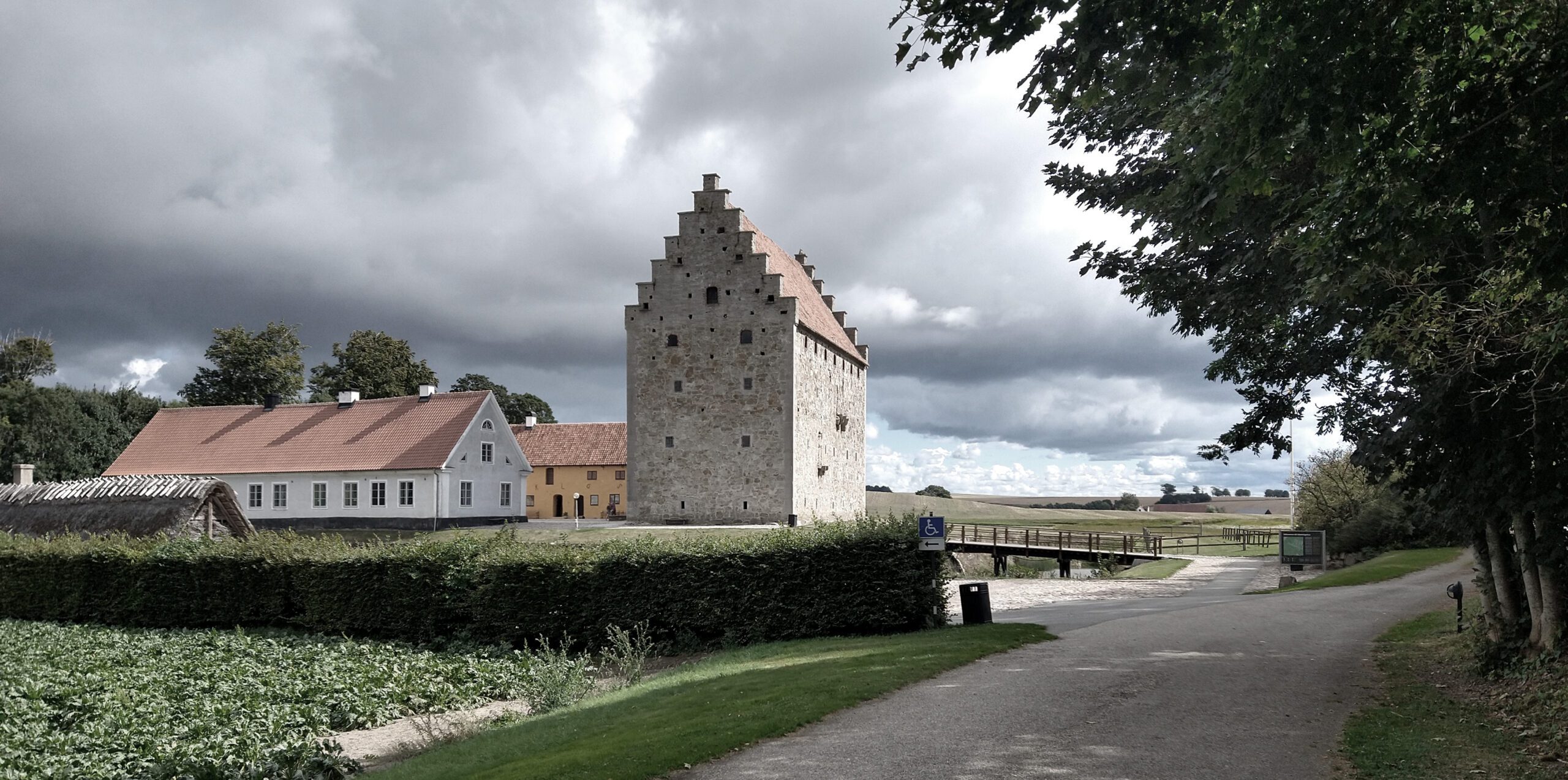Glimmingehus in easy-to-read English
Join us for a castle tour
with the help of pictures and easy-to-read text.
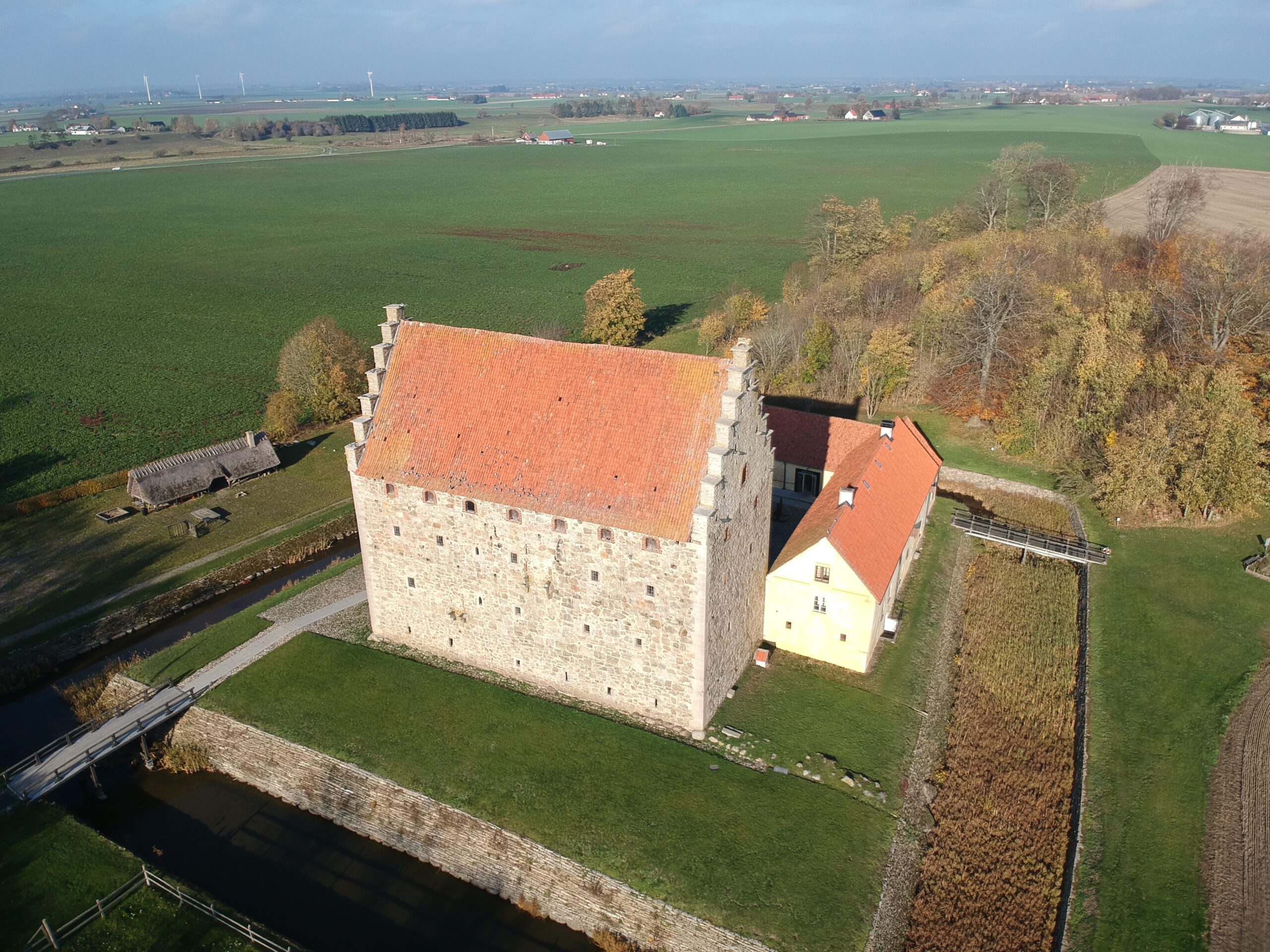
Glimmingehus
The castle at Glimmingehus
was built in the Middle Ages.
Building work began in 1499.
Jens Holgersen Ulfstand and
Margareta Arvidsdotter
lived in the castle with their children.
Jens and Margareta were members of the nobility.
Nobles were the richest group
in society in the Middle Ages.
The castle’s entrance
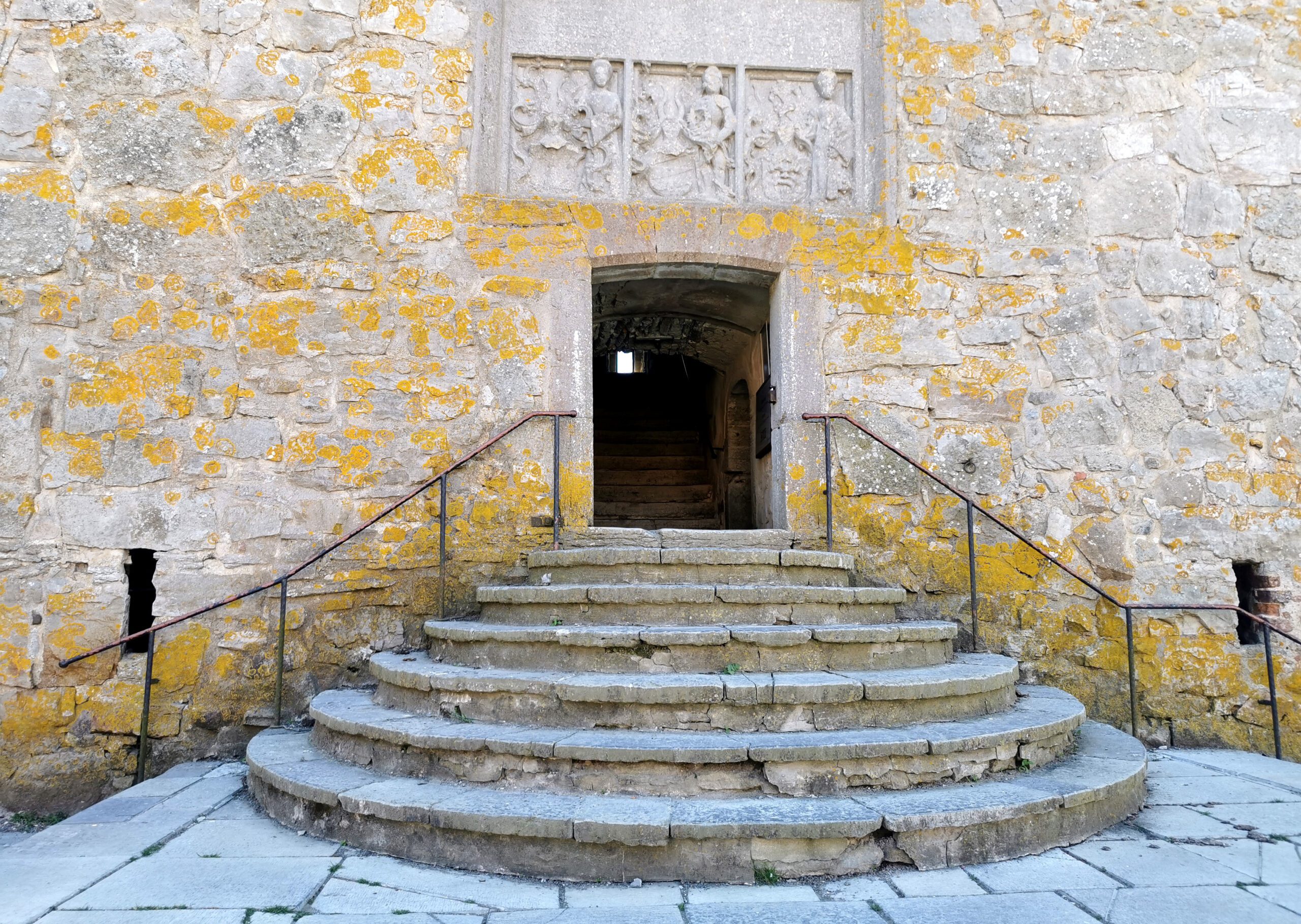
Here, you can see the front steps
and entrance to the castle.
There is a stone relief above the entrance.
It says that building work on the castle
started in 1499.
The text and pictures explain
that Jens was a member of the Ulfstand family
and Margareta was a member of
the Trolle family.
Oriel window
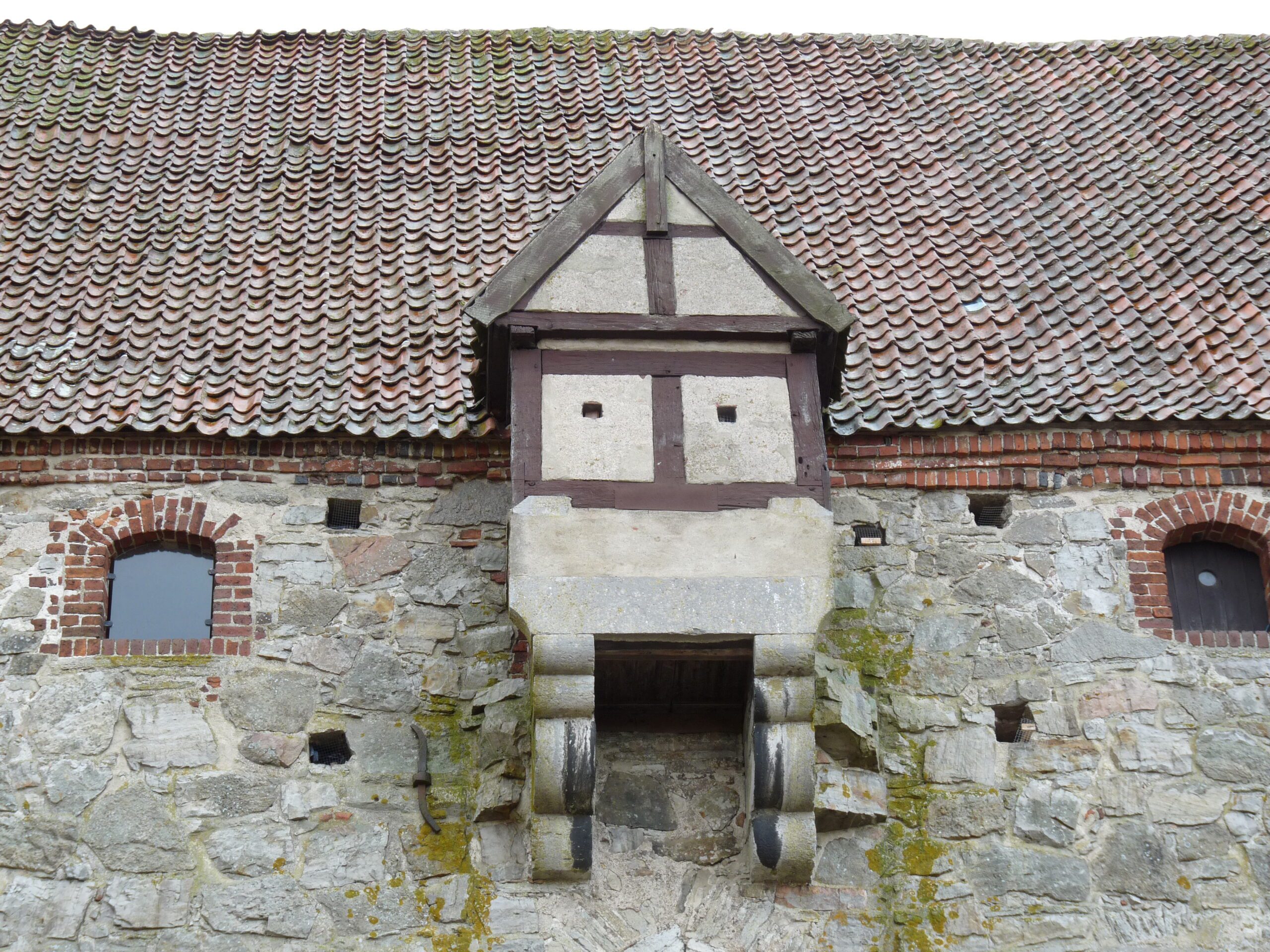
High above the entrance
there is an oriel window.
An oriel is a window that
sticks out from the side of a building.
There is a hole in the floor of the oriel.
People in side could pull things
up into the castle.
They could also drop things onto
the enemy through the hole in the oriel.
The Entrance Hall
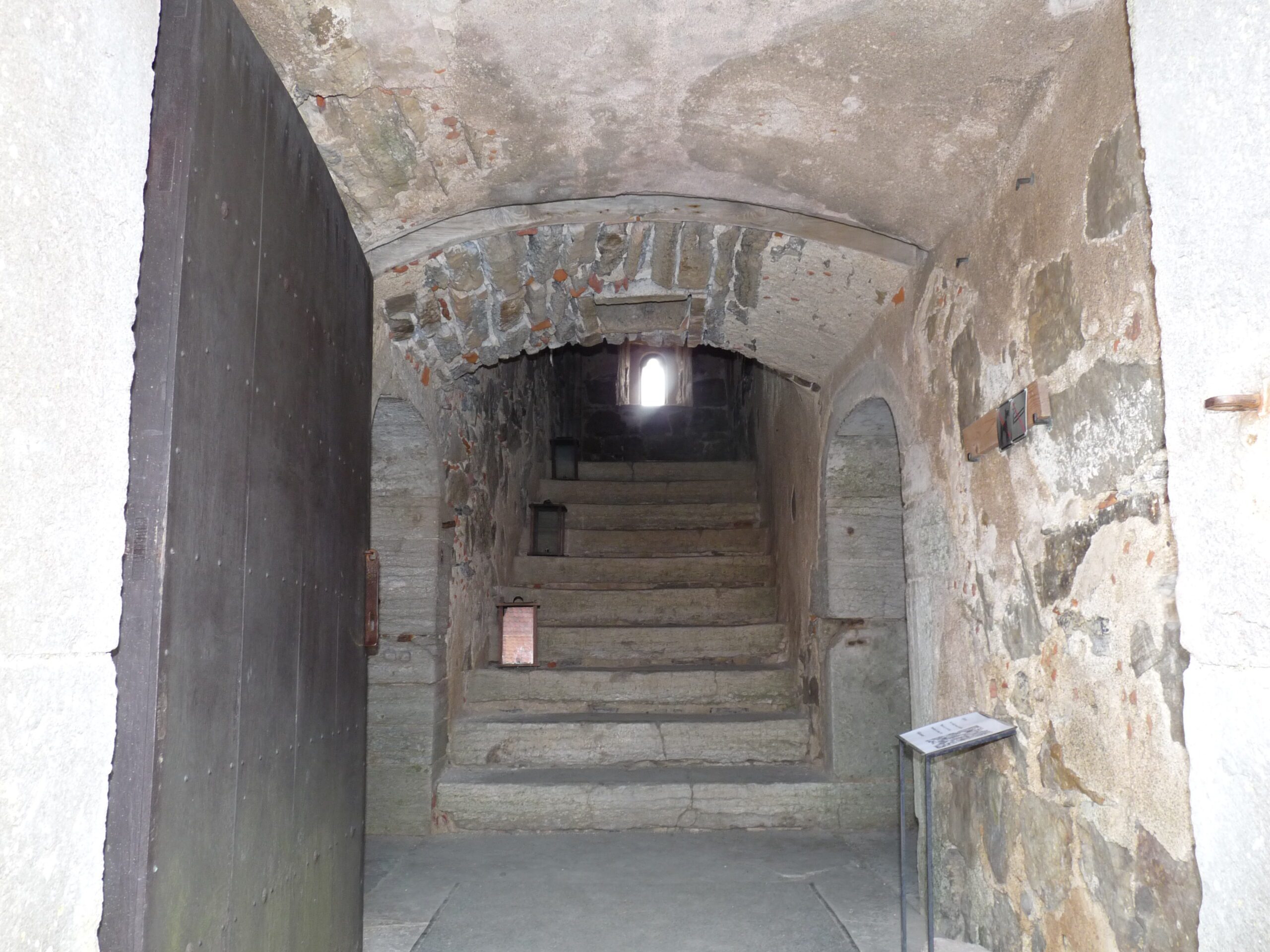
Here, you can see the stairs
that lead up to the first floor.
There are also two doorways
that lead down to the basement.
Murder hole
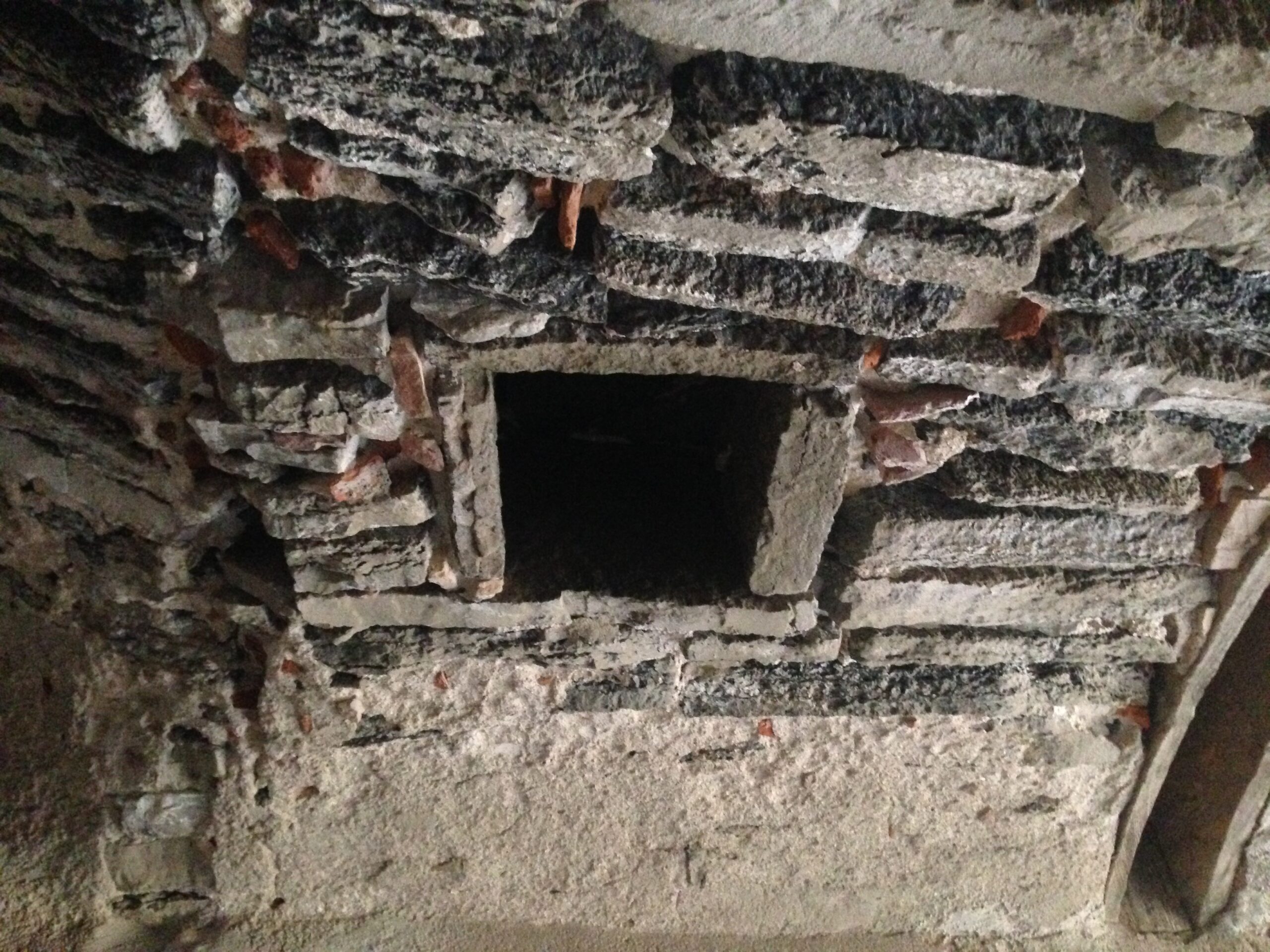
In the ceiling of the vestibule
there is a murder hole.
The castle’s soldiers
could pour boiling water
through the hole
onto the enemy.
The Kitchen
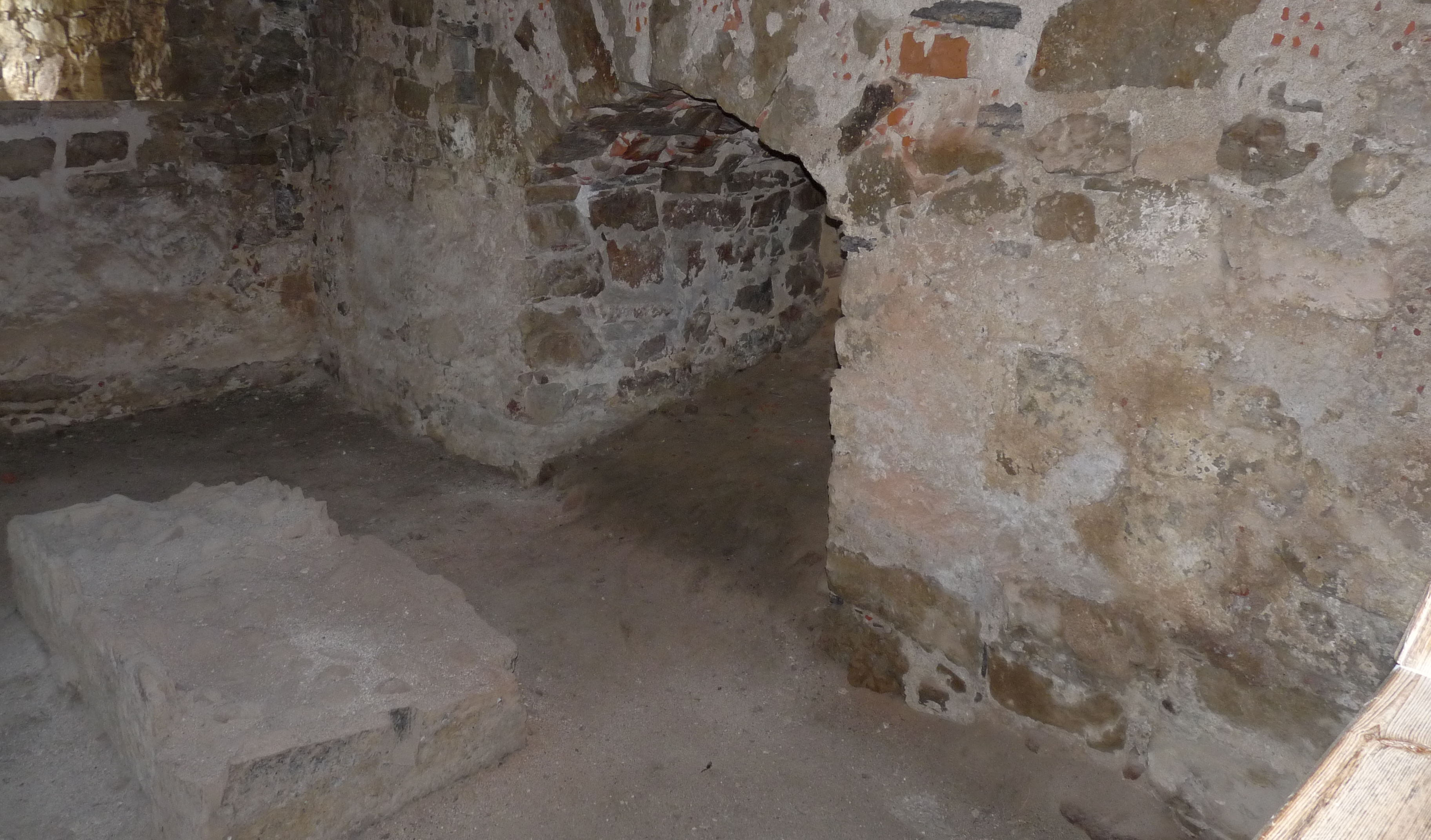
From the stairs down to the basement
you can see the kitchen.
On the floor of the kitchen
are the remains
of a kitchen range.
Basement and well
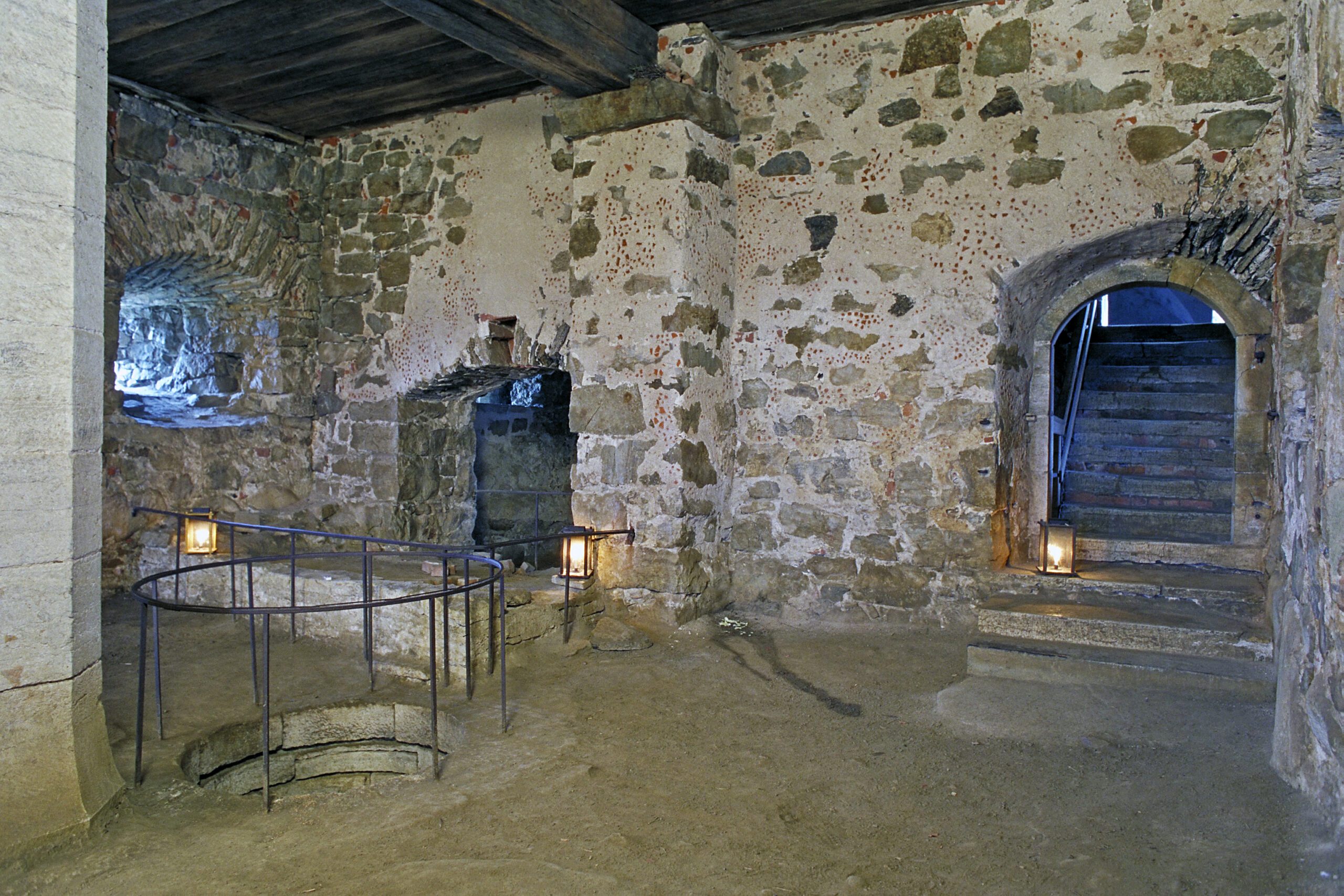
On the left of the picture
you can see a well.
The people who
lived in the castle
drew water from the well.
Baking oven

On the left you can also see
the remains of an oven.
This is were the people
who lived in the castle baked bread.
Behind the oven is the kitchen.
The Cellar
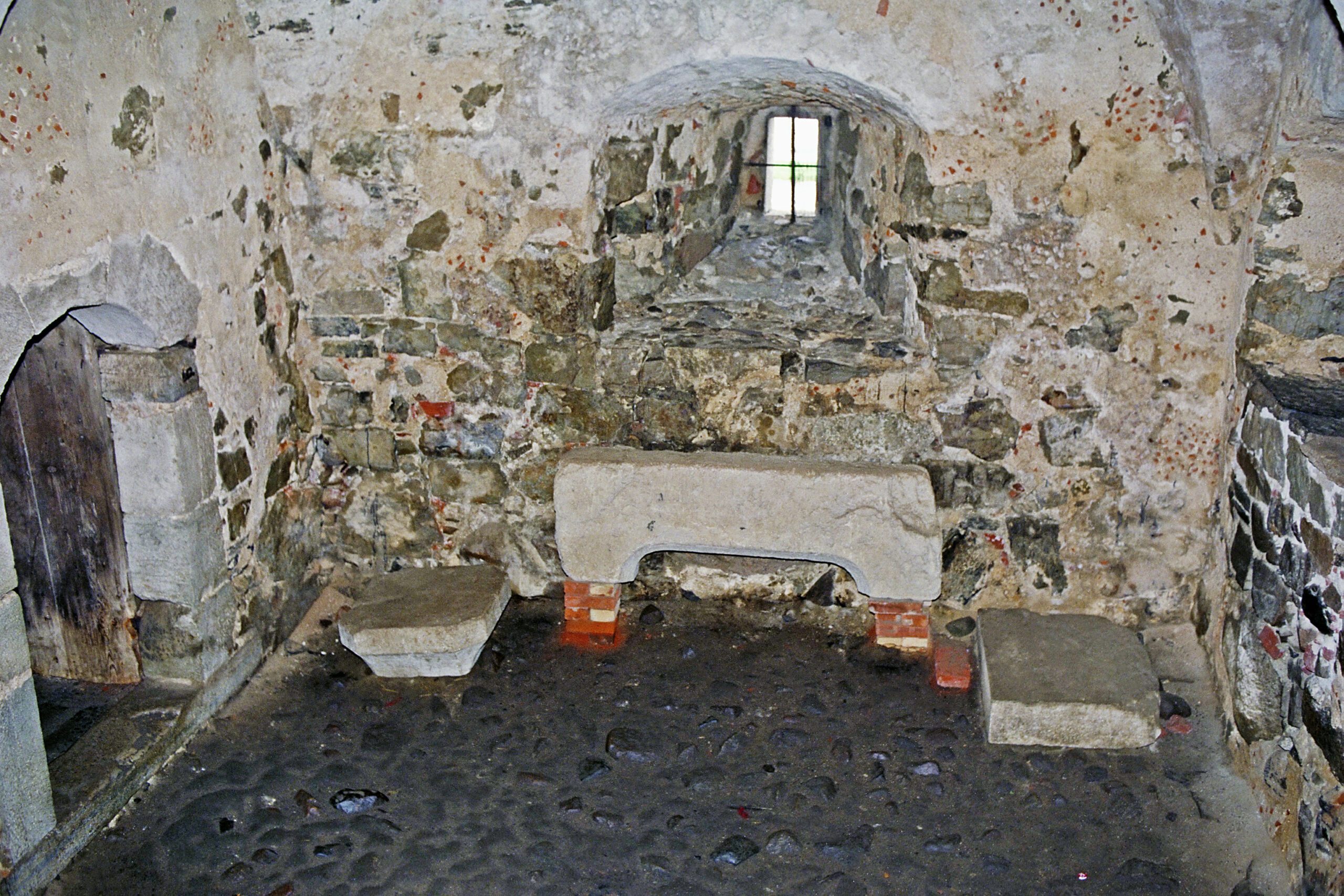
The cellar was where
food and drink was stored
The cellar had two rooms.
You can see the doorway to the other room
on the left.
First staircase
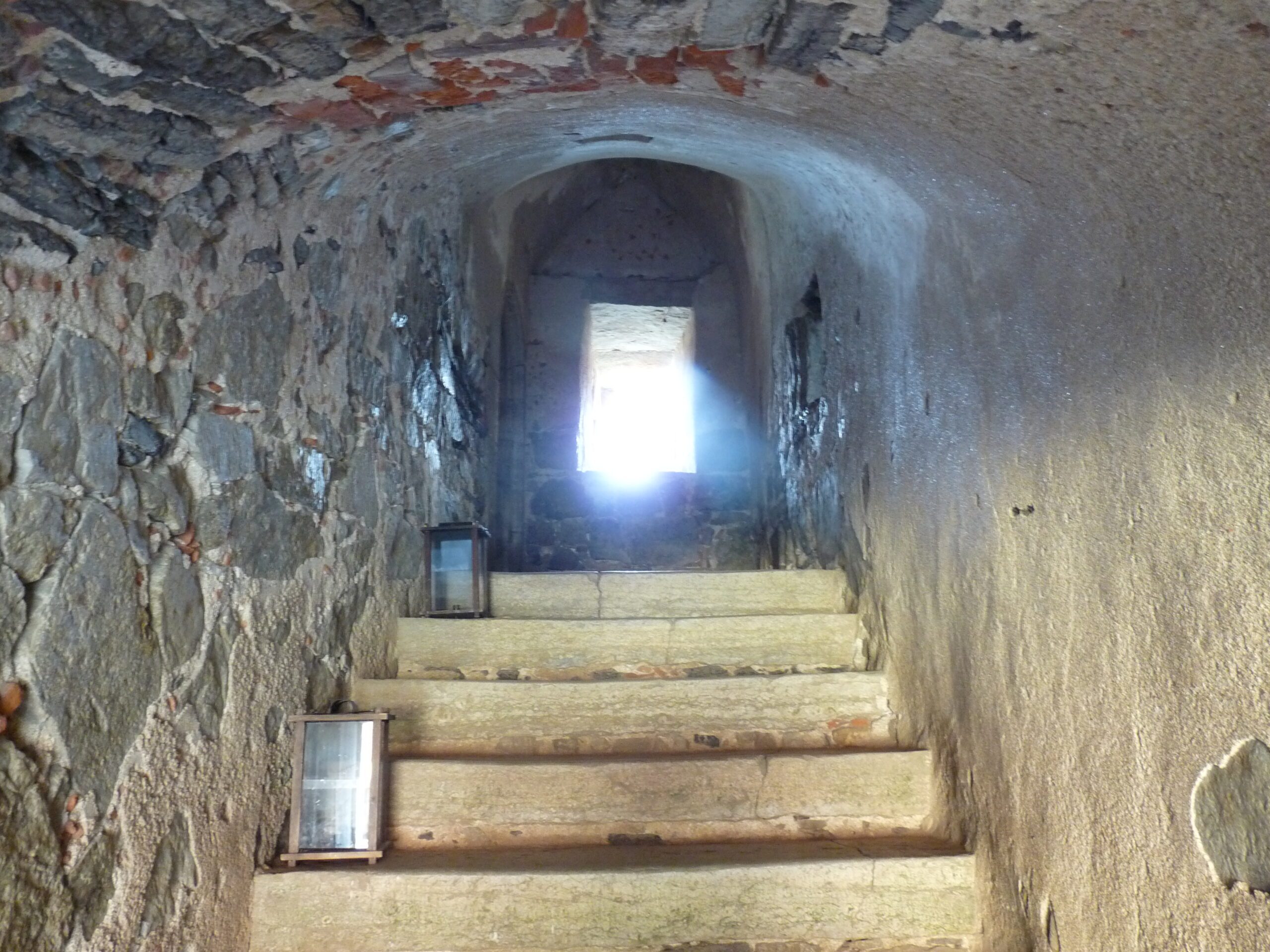
These stairs lead up to
the first floor of the castle.
The stairwell has murder holes
in the walls and ceiling.
Through these, the castle’s defenders
could shoot at the enemy.
The Upper Entrance hall and The Wild Man
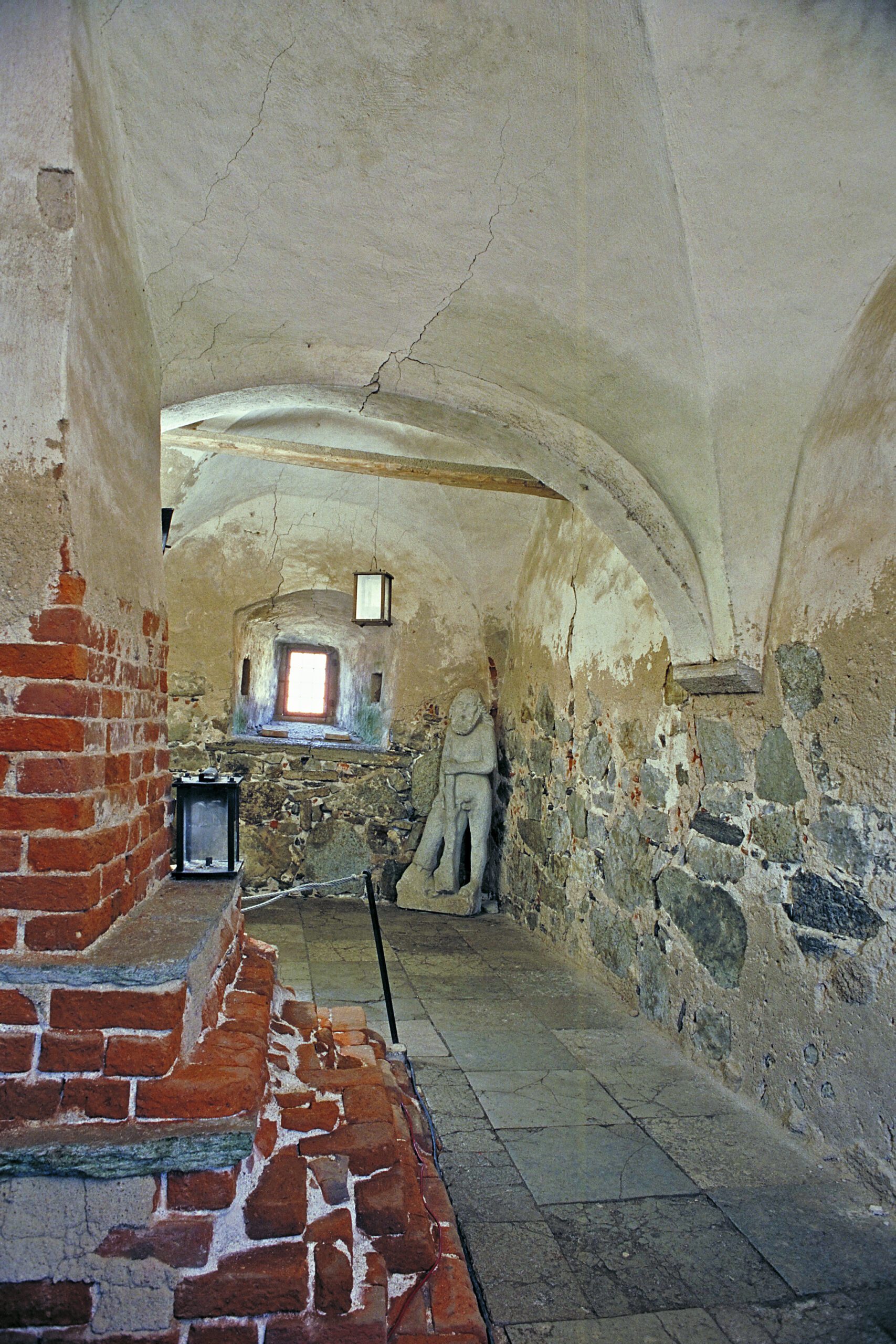
On the first floor there
is a second vestibule
with a red-brick chimney.
In the corner stands the
stone statue, The Wild Man.
The Wild Man is a common
figure in fairy tales in
medieval Europe.
The Castle Hall
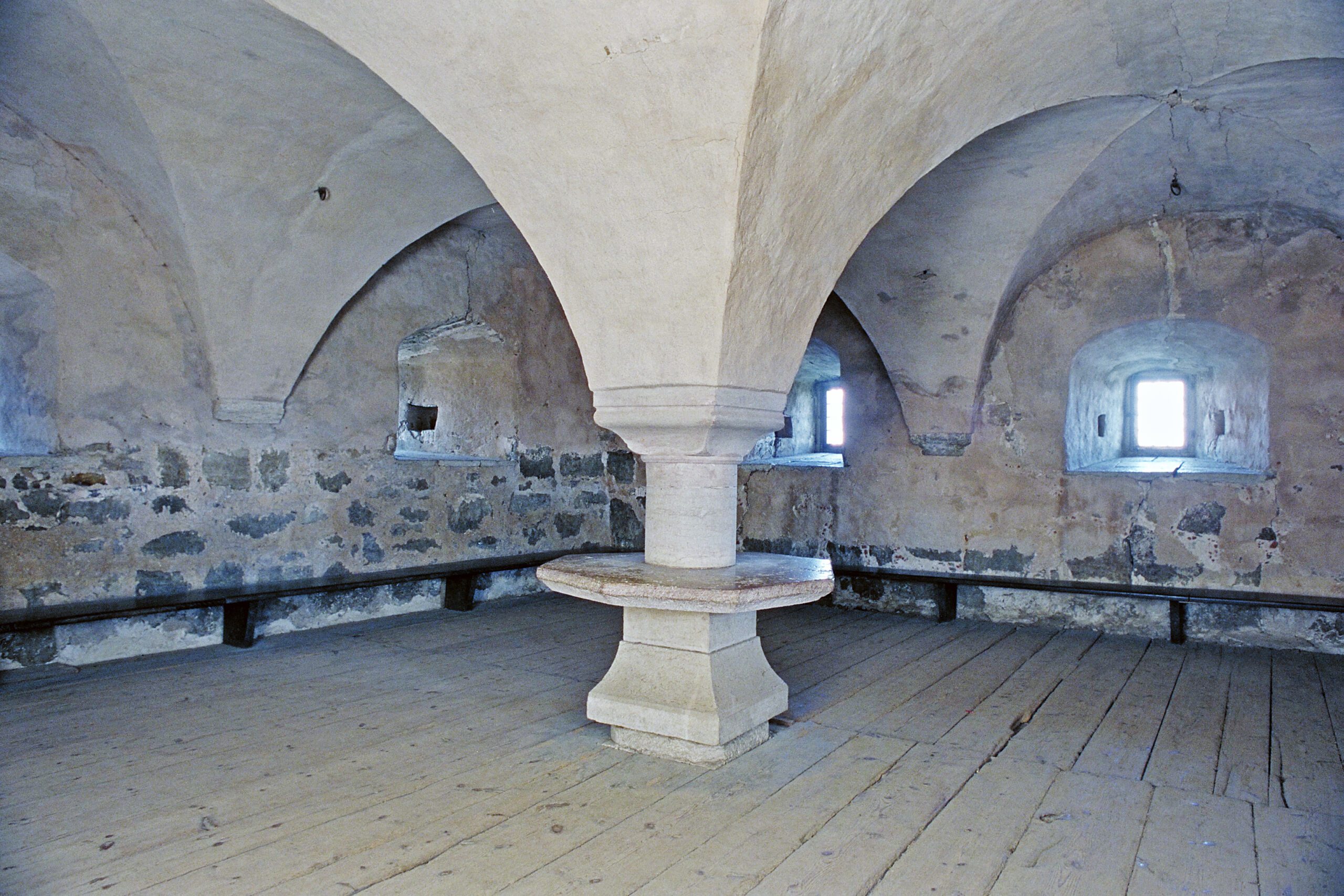
The Castle Hall was used
as a meeting room and staff room.
It contains an eight-sided stone table
around a large pillar.
The Master’s Chamber

These were the private
living quarters and bedchamber
of Jens Holgersen Ulfstand.
The room contains a fireplace
that was used to heat the room.
Storeroom
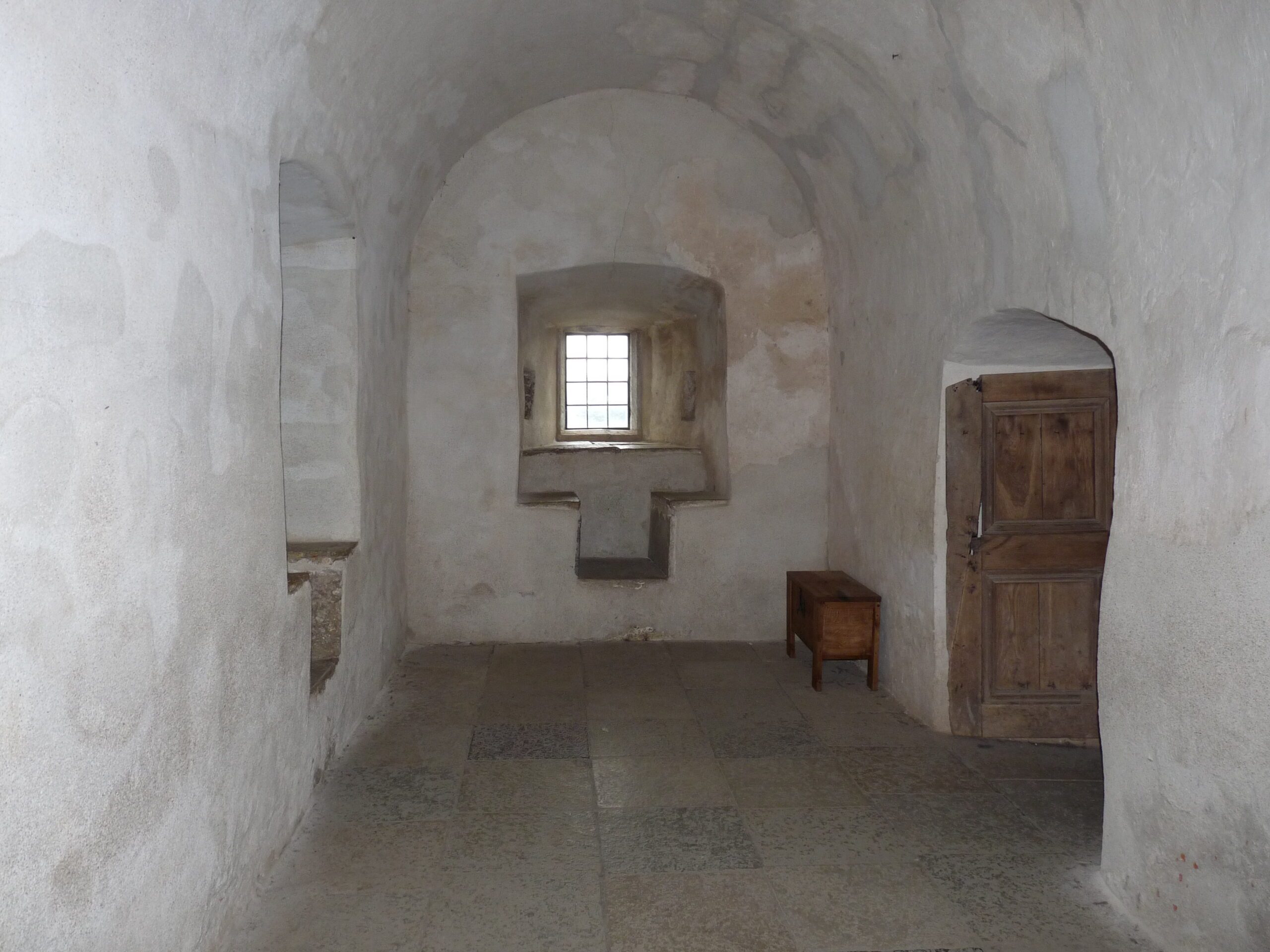
Next to the private quarters
was a storeroom.
In the storeroom
was a door to a toilet.
The walls have holes
through which defenders
could fire on the enemy.
Second staircase
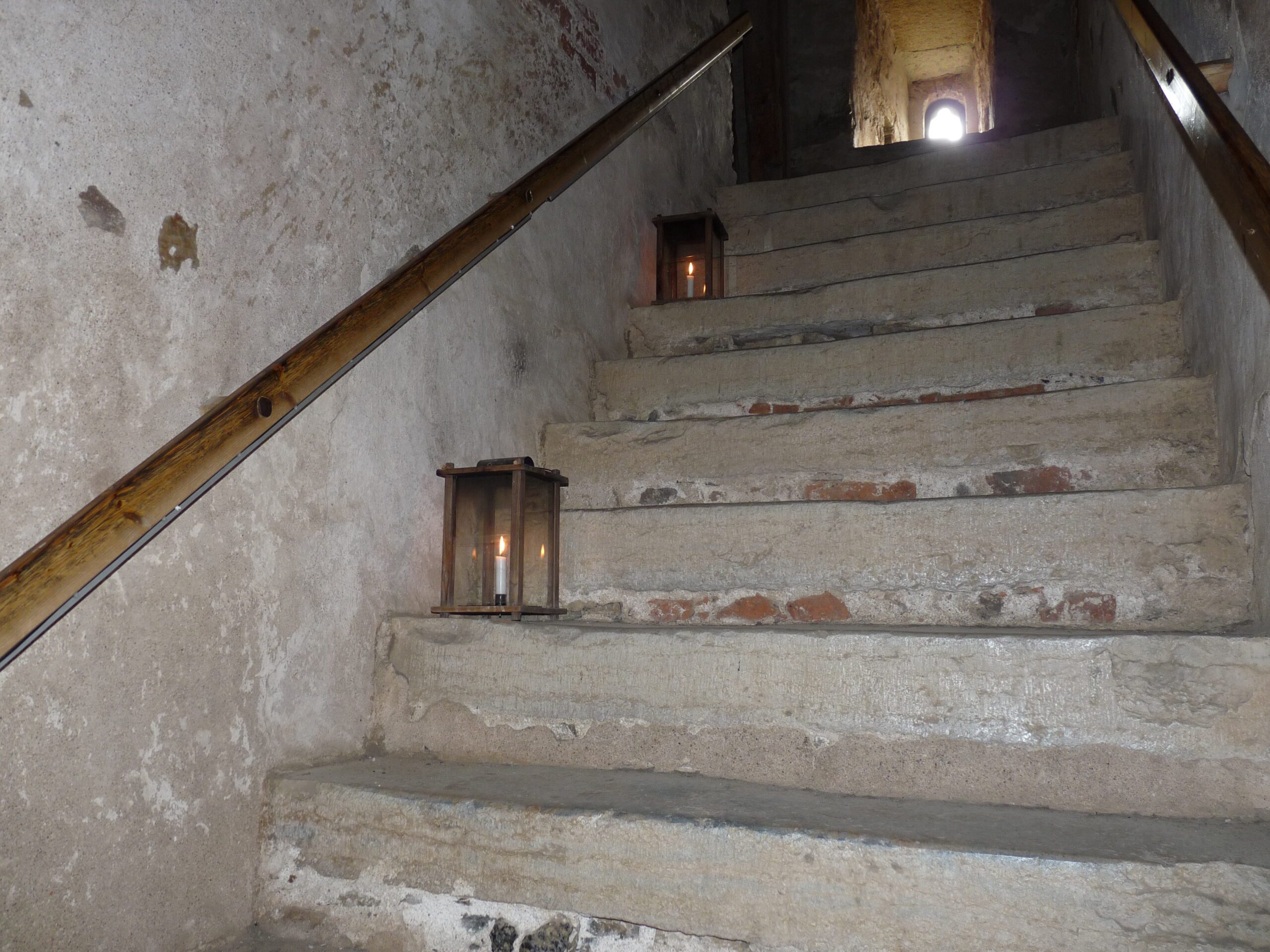
These stairs lead up to
the second floor of the castle.
Because of lack of space
these stairs are very steep.
The Great Hall
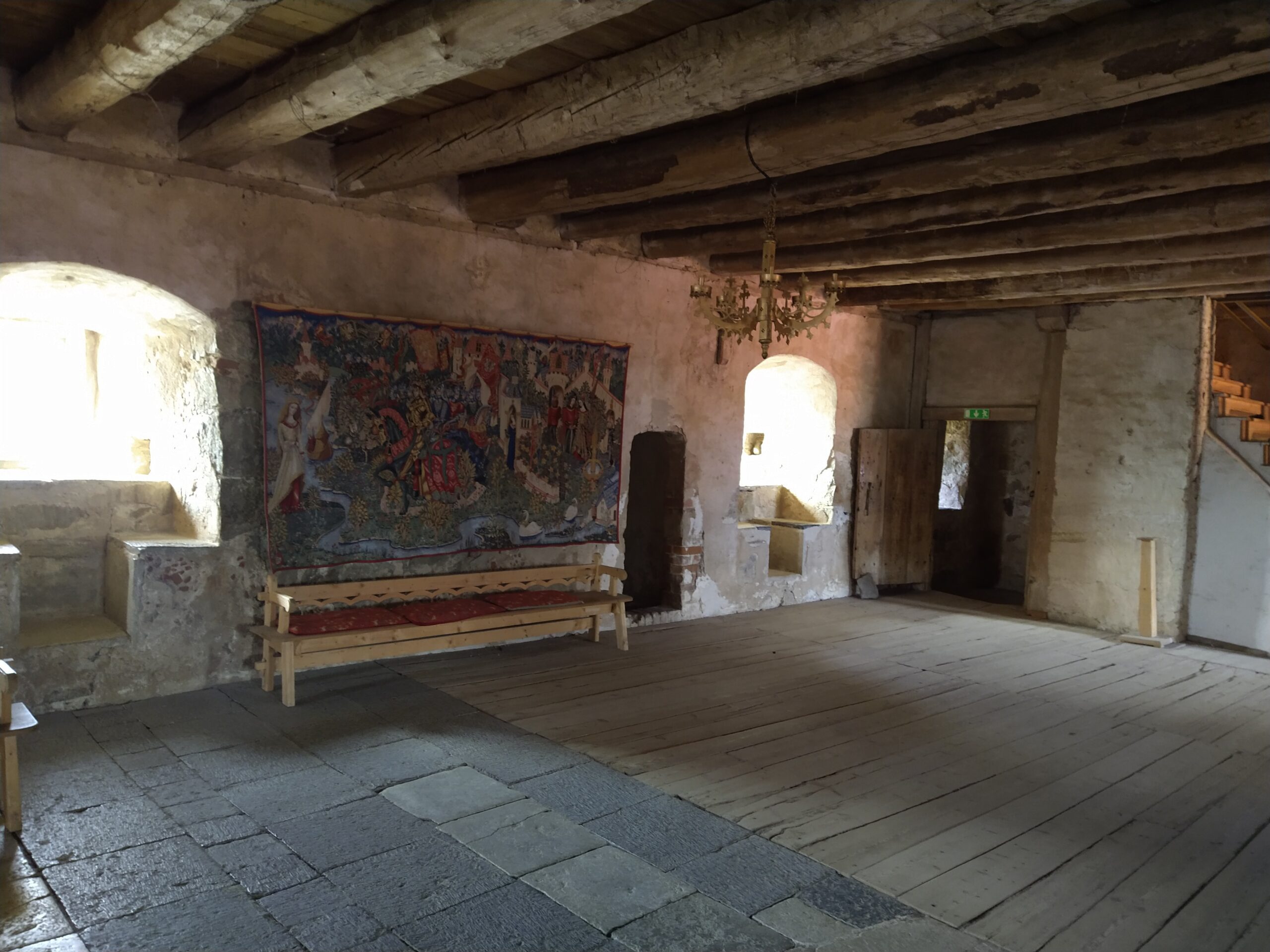
In the Middle Ages the hall
was divided in different rooms.
The largest room
was used for feasts.
The smaller rooms were used
as guestrooms or storerooms.
Fireplace
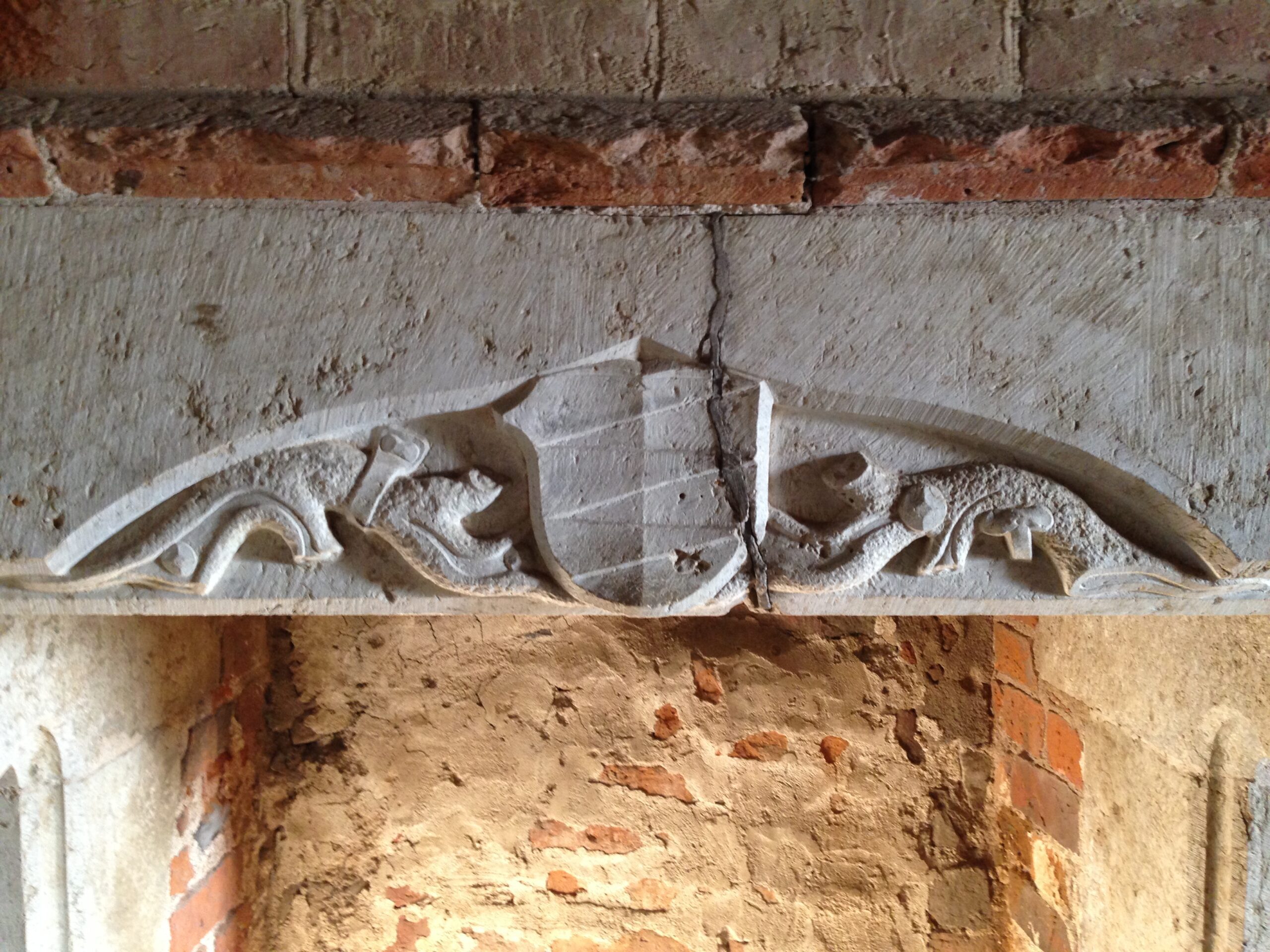
There is a fireplace in the Great Hall.
This was used to heat a corner room.
The fireplace is decorated with
the Ulfstand coat of arms.
The Lady’s chamber
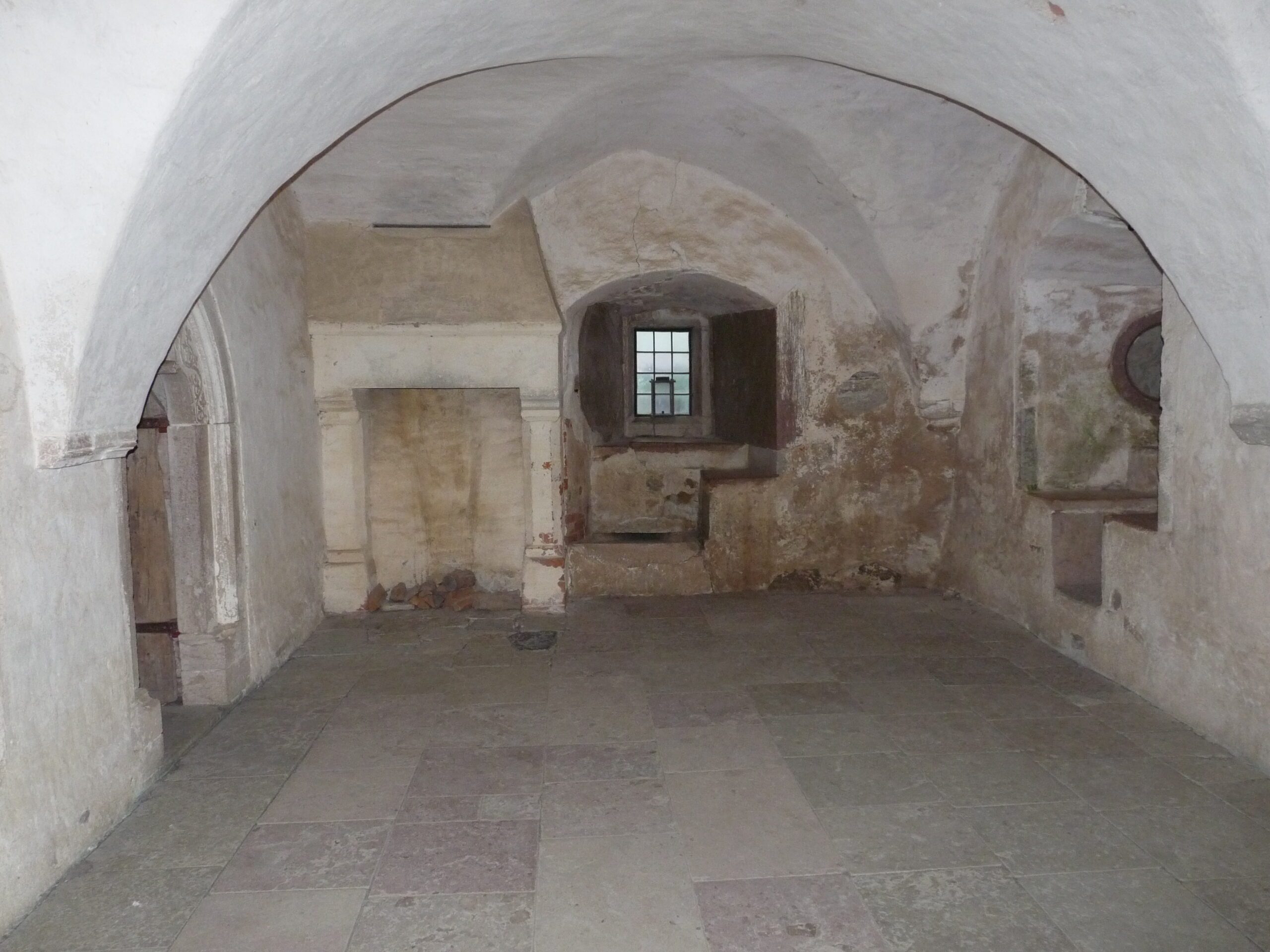
This was the living quarters and
Bedchamber of the mistress of the house,
Margareta Arvidsdotter.
There are stone window seats
where she could sit.
The Battle Plaque
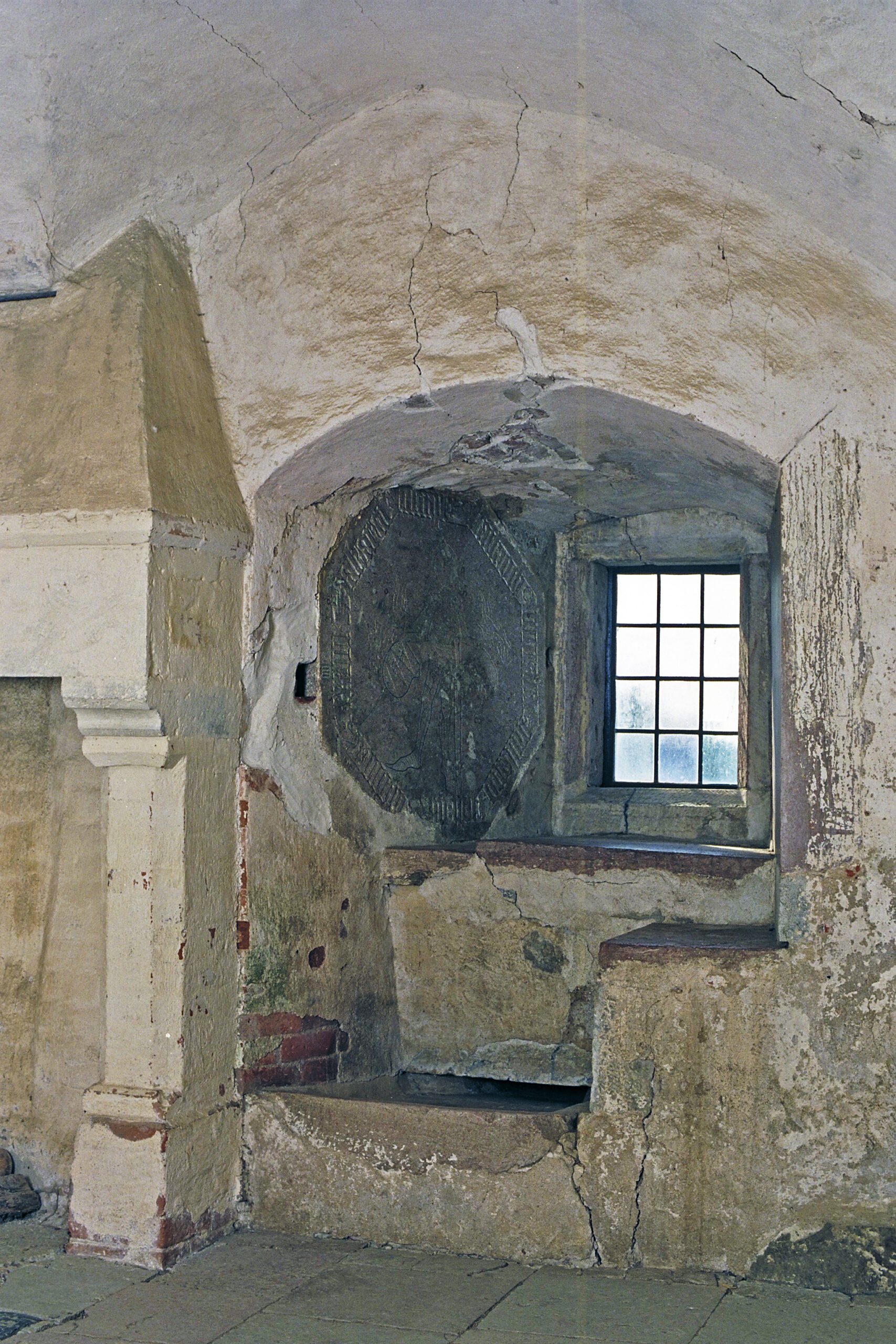
In the wall of the mistress’ chamber
is a decorated stone.
This stone is called the Battle Plaque.
The eight-sided stone was originally
the top of a garden table.
Stone doorway
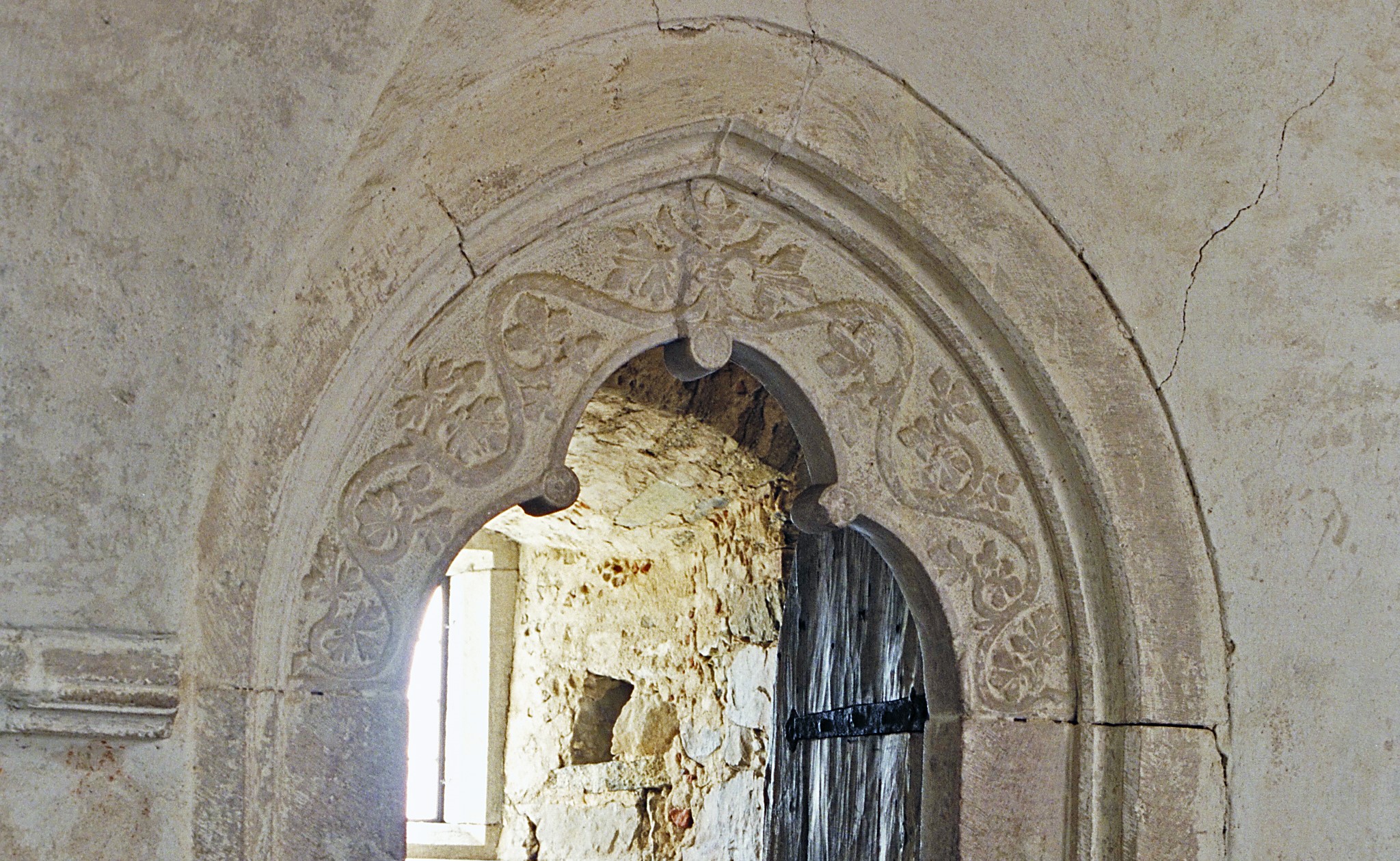
In the mistress’ chamber
there is a beautiful ornate doorway
carved in stone.
This leads into a storeroom.
Storeroom
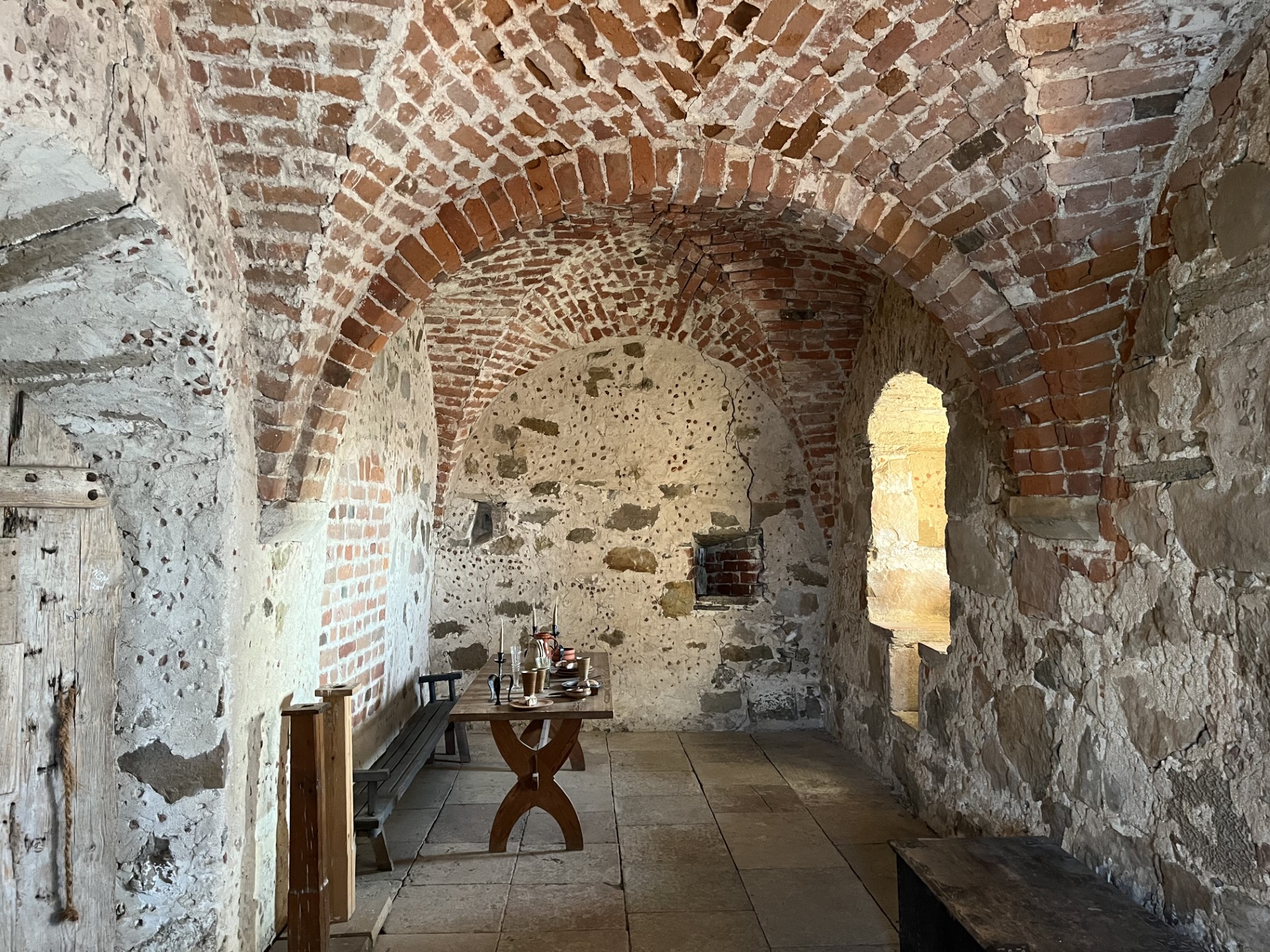
Next to the mistress’ chamber
was a storeroom.
There is no plaster on the walls
or ceiling of the storeroom,
leaving the red brick walls visible.
Perhaps there was never
any plaster on the walls,
or it may have loosened
and fallen off.
Stairs to the Shooting Loft

A staircase leads up from the great hall
to the Shooting Loft.
On the right, you can see
the opening to the castle’s oriel.
The Shooting Loft
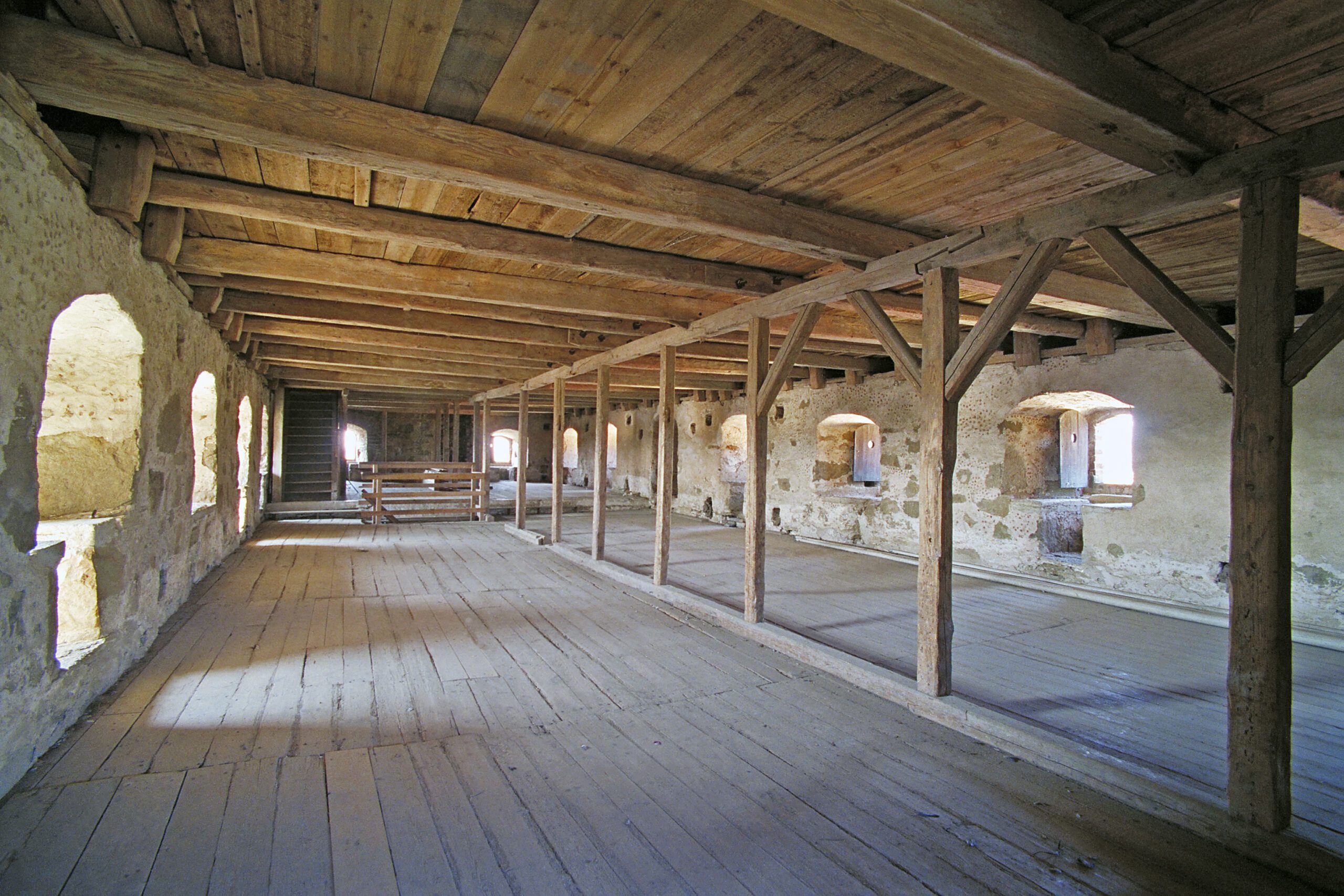
We can’t be sure what the Shooting Loft
was used for in the Middle Ages.
Later, it was used for
defence and as a storeroom.
Window openings
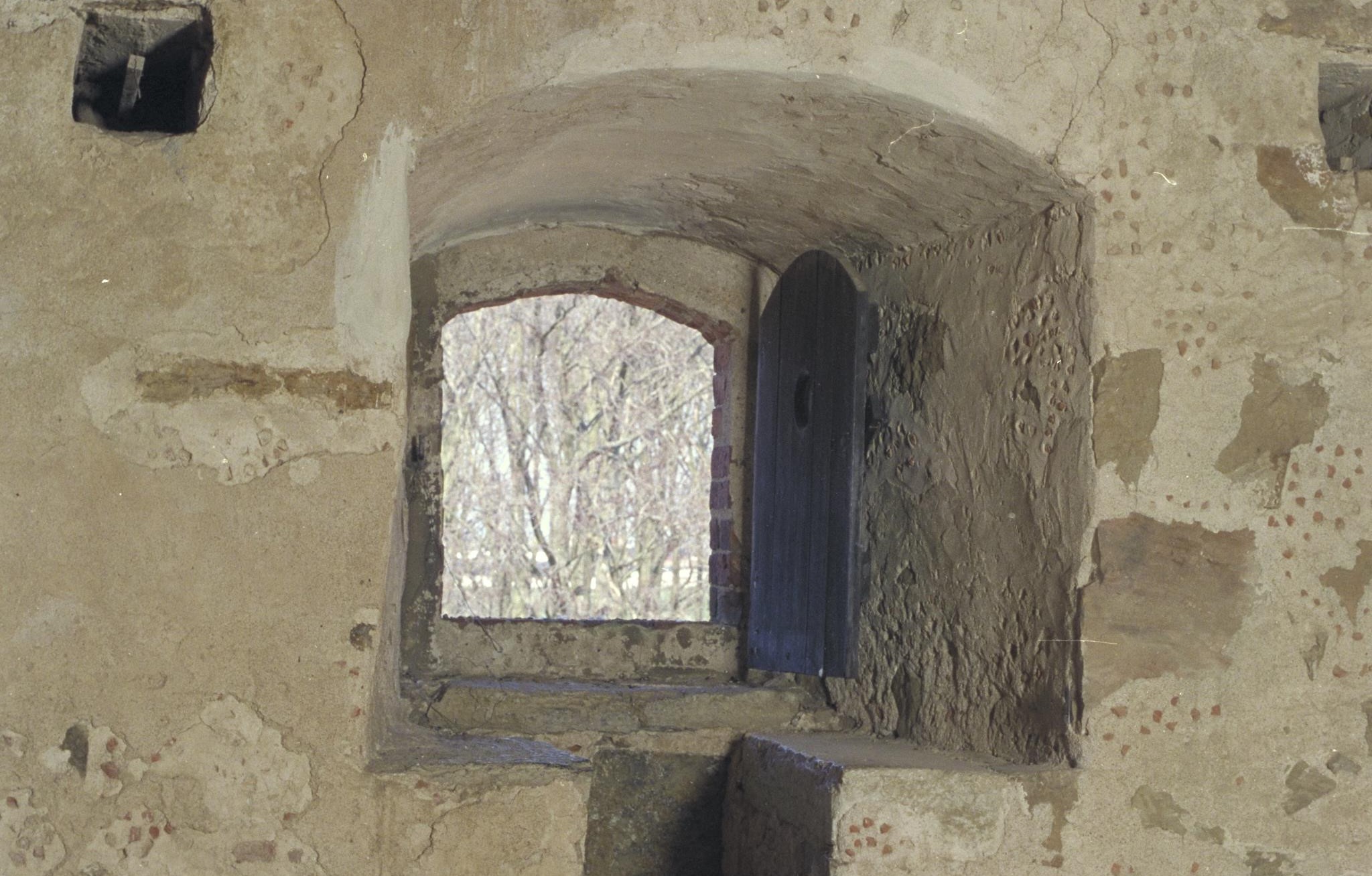
There are many window openings
in the Shooting Loft.
These could be used to fire cannons.
The Attic
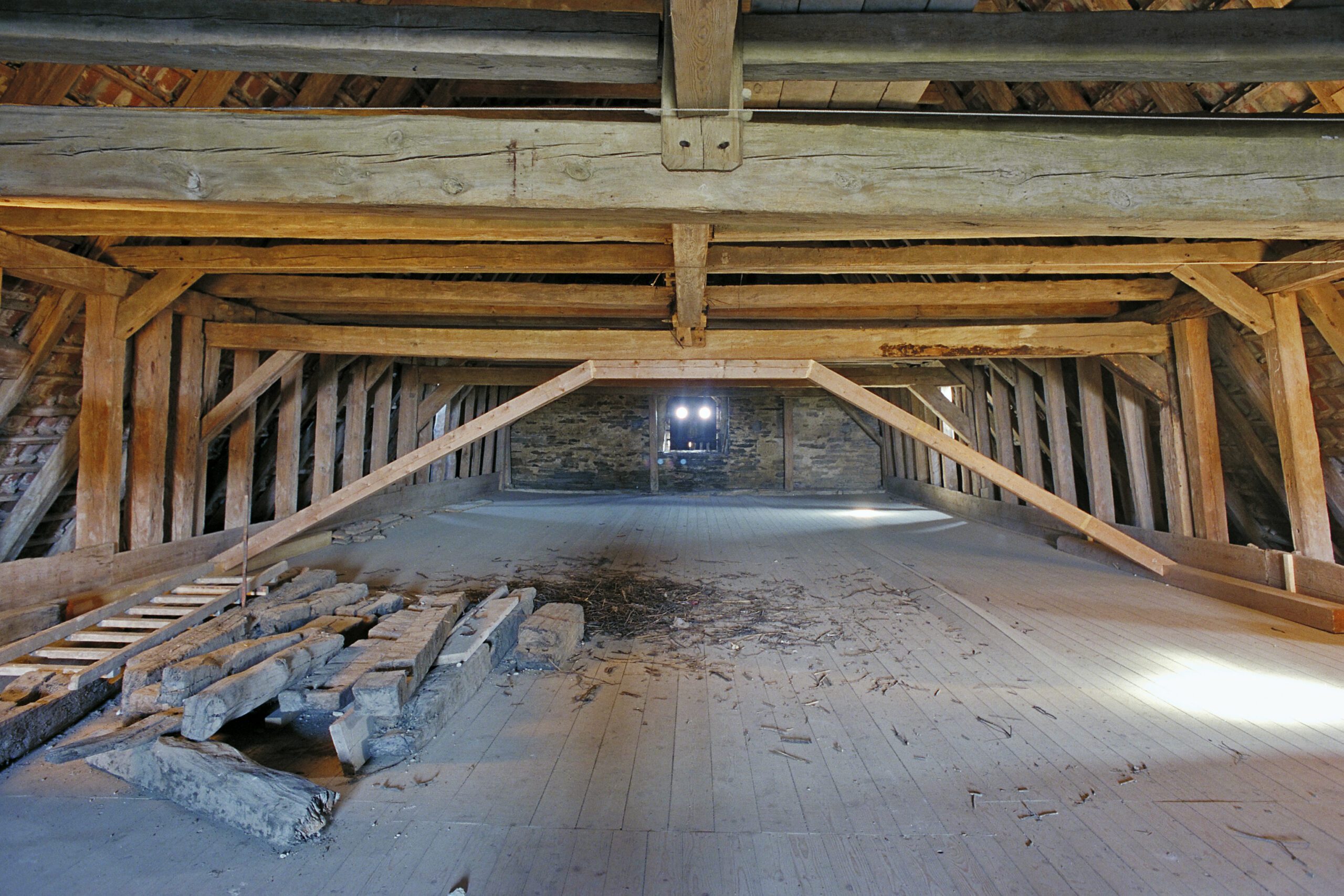
At the top of the castle
is the attic.
In the Middle Ages,
the attic was used for storage.
Some of the wooden beams
in the attic are very old.
They are from the Middle Ages.
Wood can last for a very long time
Indoors when it is dry.

